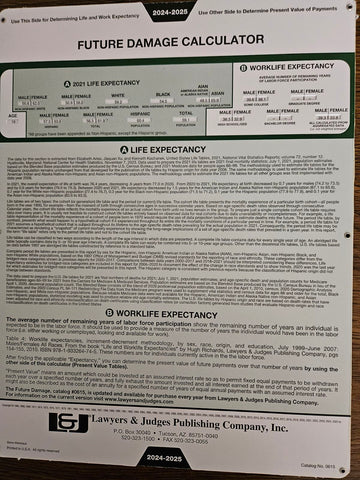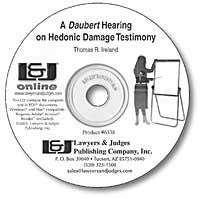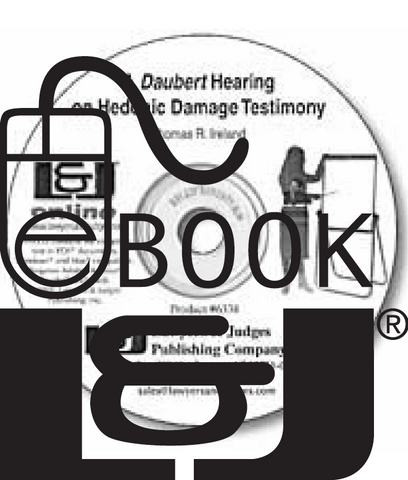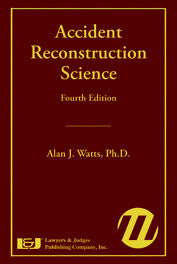
Medical-Legal Aspects of Drugs, Second Edition PDF eBook
- Author: Marcelline Burns
- ISBN 10: 193326408X
- ISBN 13: 978-1933264080
- Copyright Date Ed: October 26, 2006
- Pages: 255 pages
- PDF eBook
Drug use is at least as long standing as recorded history. Many centuries ago humans, as well as some animal species, discovered medicinal and intoxicant properties of a variety of plants. As predicted in the first edition of Medical-Legal Aspects of Drugs, drug use continues to be a problem but there have been significant changes. Drugs of choice and use trends have changed and new issues have surfaced. Drug options have expanded with the discovery and re-discoveries of intoxicating plant materials and the development of new compounds in both legal and illegal laboratories. The use and abuse of drugs will continue.
Medical-Legal Aspects of Drugs addresses the challenge of this dynamic and pervasive problem with accurate, cutting-edge information from acknowledged experts. You’ll learn about psychoactive drugs, effects of various kinds of drugs, both legal and illegal, on behavior, and the development of anxiolytics, antidepressants, and antihistamines. These medications, which are effective treatments for depression, insomnia, anxiety, chronic allergic rhinitis, and numerous other disorders, have become popular as raw materials or as intoxicants themselves, producing a host of new issues and problems to be addressed.
Drug use in the workplace, in schools, and in athletics continues to be a widespread problem. You will learn about the effects of drug use on employee performance in the workplace or school. You will also learn about the effects of doping by athletes as they seek improved performance. The drug detection methods and the legal issues surrounding the practice of mandatory testing for drugs are discussed.
Drug use is often linked with criminal activity, including driving under the influence, dealing, manufacture, theft, assault, child or spousal abuse, murder, and other crimes. Drug-related offenses fill our courts, the perpetrators populate our jails, and their crimes devastate families, schools, and communities. This book provides information about prosecution and defense of drug cases, as well as information on drug law enforcement and field sobriety testing and other types of drug testing commonly used by law enforcement agencies. In-depth coverage of drugs and their effect on visual function and on driving behavior is also included, as drug use is often most commonly evident in these areas
Drug use is an international issue. The contributors to Medical-Legal Aspects of Drugs offer an international, as well as an American perspective, and much of their knowledge is currently available as written materials only in this text. As a diverse group of uniquely capable experts, their chapters examine the major medical-legal issues surrounding drug use. What they have written will provide legal and criminal justice professionals, employers, school and community personnel, and other interested individuals with essential knowledge about drugs.
Topics Include:
- Classification of drugs
- Pharmacology and toxicology
- Pharmacokinetics
- Laboratory issues
- Laboratory technology
- Performance and behavioral effects of illicit drugs
- Performance and behavioral effects of medicinal drugs
- Cocaine, methamphetamine and driving impairment
- Marijuana issues
- The rave and club drug phenomenon
- Medicinal drugs: Labels and warnings
- Drugs and the Workplace
- Athletics and doping
- Visual function and drugs
- Field sobriety testing
- Drug effects on driving
- Prosecution and defense of drug cases
Table of Contents
Chapter 1: The Classification of Drugs by Category
1.1 Introduction
1.2 Drug Categories and the Drug Recognition Expert (DRE)
A. Overview
B. Premise of DRE classification
C. Categories versus specific drug
1.3 Drug Metabolism
1.4 Development of Dependency
1.5 Development of Tolerance
1.6 Poly-Drug Use
A. General characteristics
B. Four types of poly-drug use
1.7 Drug Effects Defined and Described
A. Substance
B. Subject
C. Setting
1.8 Seven Categories of Drugs
A. Cannabis
B. CNS depressants
C. CNS stimulants
D. Hallucinogens
E. Inhalants
F. Narcotic analgesics
G. Phencyclidine (PCP) and dissociative drugs
Chapter 2: Pharmacology and Toxicology
2.1 Introduction
2.2 Mechanisms of Drug Action
2.3 Drug Classes
A. Cannabis
B. Central nervous system depressants
C. CNS stimulants (amphetamines and cocaine) <br>D. Hallucinogens
E. Inhalants
F. Narcotic analgesics
G. Phencyclidine
2.4 Drug Combinations
2.5 Tolerance and Withdrawal
2.6 Therapeutic Use
Chapter 3: Pharmacokinetics
3.1 Introduction
3.2 Clinical Therapeutics—Pharmacokinetics
3.3 Human Performance Pharmacokinetics
3.4 Employment-Related Pharmacokinetics
3.5 Poison Control Centre and Medical Emergency Department—Pharmacokinetics
3.6 Postmortem Investigations—Pharmacokinetics
Chapter 4: Laboratory Issues
4.1 Introduction
4.2 Analysis of Samples Obtained from Living Subjects
4.3 Analysis of Postmortem Samples
4.4 Drug Stability in Biological Products
4.5 Screening and Confirmation
4.6 Drug Detection Times
4.7 Interpretation
4.8 Accreditation
4.9 Conclusion
Chapter 5: Laboratory Technology
5.1 Introduction
5.2 Context of Analyzing—Systematic Toxicological Analysis
A. The need for large spectra extraction and high specificity detection
B. The need for non-specialization
C. Extracting the analytes of interest
D. Criteria for a successful detection
5.3 The Analytical Strategy
A. Basic requirement of the techniques
B. Requirement for identification
C. The information needed
D. Requirement for quantification
E. Validation of the method and quality assurance in the laboratory
F. Second analysis and confirmatory analysis
G. The economics of the methodological approach
5.4 Drug Screening
A. Immunoassays
B. Thin layer chromatography
C. High performance liquid chromatography
D. Gas chromatography
E. Capillary electrophoresis
F. Drug confirmation
5.5 Pitfalls and Limitations of Drug Screens
A. Causes of false-positive drug screens
B. Causes of false-negative drug screens
5.6 Summary
Chapter 6: Performance and Behavioral Effects of Illicit Drugs
6.1 Introduction
6.2 Psychostimulants
A. Cocaine
B. Amphetamine
C. Ecstasy
6.3 Cannabis
6.4 Hallucinogens
A. Glutamatergic hallucinogens (NMDA receptor antagonists)
B. Serotonergic hallucinogens <br>C. Hallucinogen effects on driving performance
6.5 Inhalants
A. Volatile solvents and fuels
B. Nitrous oxide
C. Alkyl nitrites
6.6 Opioids
A. Morphine
B. Heroin
C. Methadone
6.7 Gamma Hydroxybutyric Acid
6.8 Conclusions
Chapter 7: Performance and Behavioral Effects of Medicinal Drugs
7.1 Introduction
7.2 Behavioral Toxicity: Problem Definition
7.3 Assessment of Behavioral Toxicity
7.4 Anxiolytics and Hypnotics
7.5 Antidepressants
7.6 Antipsychotics
7.7 Antihistamines
7.8 Antiepileptic drugs
7.9 Other Drugs
7.10 Drug Interactions
7.11 Conclusion
Chapter 8: Cocaine, Methamphetamine, and Driving Impairment
8.1 Introduction
8.2 Stimulant Pharmacology
8.3 Comparative Pharmacological Properties of Cocaine and Methamphetamine
A. Absorption
B. Metabolism
C. Elimination
8.4 Psychological and Physiological Effects of Stimulant Use
A. Amphetamines
B. Cocaine
8.5 Effects of Stimulants on Driving
A. Empirical considerations
B. Epidemiological studies
C. Laboratory studies
8.6 Stimulants and the DRE Evaluation
8.7 Conclusions
Chapter 9: Marijuana Issues 2006
9.1 Introduction
9.2 The Study of Marijuana
A. THC content
B. Dose levels
9.3 Marijuana and Driving
9.4 Medical Marijuana: A 2006 Issue
9.5 A Medical Marijuana Report from the Institute of Medicine
9.6 Summary
Chapter 10: The Rave and Club Drug Phenomenon:Dancing with Darkness and Danger
10.1 Introduction
10.2 A "Rave" Defined
A. Underground rave
B. Semi-underground rave
C. Above-ground rave
10.3 Raves and Law Enforcement
10.4 3, 4 Methylenedioxymethamphetamine (MDMA)
A. Pills and paraphernalia
B. MDMA and death or "don’t hug this drug!"
C. MDMA and the brain
10.5 Gamma Hydroxy Butyrate (GHB)
10.6 Ketamine
10.7 Phencyclidine (PCP) and Embalming Fluid
10.8 Lysergic Acid Diethylamide (LSD)
10.9 Nitrous Oxide
10.10 Mushrooms
10.11 Other Drugs of Interest
10.12 Marijuana and Other Plants
10.13 Over-the-Counter (OTC) Products
10.14 Old Drugs, New Issues
Chapter 11: Workplace
11.1 Introduction
11.2 Current Tracking Methods
A. National surveys
B. History of drug-free workplace programs
11.3 Identification of Impaired Employees
A. Behavioral observations
B. Clinical observations
11.4 Drug Testing
A. Testing methods: history
B. Drugs tested
C. Issue of adulterants
D. Urine testing
E. Hair testing
F. Saliva testing
G. Blood testing
H. Alcohol testing
I. Sweat testing
J. Trends
11.5 Policies and Procedures
11.6 Employee Assistance Programs
11.7 Training
A. Employee awareness training
B. Supervisor training
C. Healthcare provider training
11.8 Return to Work
11.9 Summary
Chapter 12: Prosecuting Drugged Driving Cases
12.1 Introduction
12.2 Drugged Driving Laws
A. Prohibitions against driving while impaired or intoxicated by drugs
B. Zero tolerance (per se) DUID laws
12.3 Building a Case: The Totality of the Circumstances
A. The totality of the circumstances
B. Defense tactics and responses
12.4 The Standardized Field Sobriety Tests (SFSTs)
A. The SFSTs
B. SFSTs defense claims and responses
12.5 Opinion Testimony Regarding Impairment
A. Lay witnesses
B. Police expert witnesses (non-DREs)
12.6 The Drug Evaluation and Classification (DEC) Program
A. History and development
B. DRE training and certification
C. The DRE protocol
D. Categorization (classification) of drug types
E. DRE accuracy and reliability
F. The admissibility of DRE testimony and evidence
G. DRE defense claims and responses
12.7 Drug Testing
A. Methods
B. Admissibility
12.8 Toxicologists
12.9 General Defenses and Responses
A. Prescription drug defense to DUID
B. Involuntary intoxication
12.10 Conclusion
Chapter 13: Defense of Drug Cases
13.1 Introduction
13.2 Search and Seizure Issues
A. Standing: reasonable expectation of privacy
B. Searches with warrants
C. Searches without warrants
D. Roadblocks
13.3 Investigation in Drug Cases
13.4 Common Trial Issues
A. Entrapment
B. Possession
C. Drug Recognition Experts
13.5 Diversion
13.6 Collateral Consequences
A. Immigration implications
B. Asset forfeiture
C. Professional licenses
13.7 Conclusion
Case Law Citations
Chapter 14: Doping
14.1 Introduction
14.2 The History of Doping Testing
14.3 The Medical and Health Implications of Doping
14.4 The General Anti-doping Screening Approach
A. The persons targeted for doping controls
B. The general analytical strategy for anti-doping controls
14.5 Specific Analytical Techniques Used for Doping Controls
A. Compounds to be screened
B. Dedicated procedures in special laboratories
C. Examples of analytical techniques involved in doping controls
D. Isotope Ratio Mass Spectrometry: further discrimination between endogenous and exogenous doping agents
E. The absolute requirement of the B sample
F. The availability of reference dope substances
G. Criteria for identification
H. Analytical approach for large molecules and peptide detection
I. Inter- and intra-laboratory variations
14.6 Developments for the Future
Chapter 15: Visual Function, Drugs, and Field Sobriety Tests
15.1 Introduction: What Do the Eyes Have to Do with Driving and Drug Use?
15.2 External Physiology and Conditions
A. Cornea, conjunctiva, and sclera
B. Eyelids, cheek, and brow
15.3 The Visual System
A. Optics of the eye: Creating a clear image
B. Retinal components: Converting light to electrical energy
C. Optic nerve, optic tract, and optic radiation: Getting from the eye to the brain
D. Visual and higher cortex: Perception is everything
E. Vestibular system: It is a balancing act
F. Cerebellum: The neural integrator
G. Output from brainstem to the eye muscles: Telling the eyes what to do
15.4 Aspects of Visual Function-—Visual Responses
A. Visual acuity
B. Contrast sensitivity
C. Light and dark adaptation
D. Motion perception
E. Flicker perception
F. Visual field
G. Eye-hand, eye-foot, and eye-body reactions
15.5 Aspects of Visual Function—Motor Responses
A. Vergence (disjunctive, disconjugate) eye movements
B. Horizontal version (conjunctive, conjugate) eye movements
C. Vertical version and rotatory (torsional) eye movements
D. Accommodation
E. Pupil responses
F. Eyelid responses
15.6 Ocular Sequelae of Medical Conditions
A. Conditions of the eye muscles
B. Conditions of the inner eye
C. Systemic conditions
15.7 Ocular Sequelae of Environmental Conditions
A. Appearance of the eyes
B. Diplopia and suppression
C. Nystagmus
Chapter 16: The Study of Drug Effects on Driving
16.1 Introduction
16.2 Laboratory and Field Research
16.3 Laboratory Research Issues
A. Controlled Substances Act
B. Protection of human subjects
16.4 Drugs and Drug Doses
16.5 Field Research Issues




